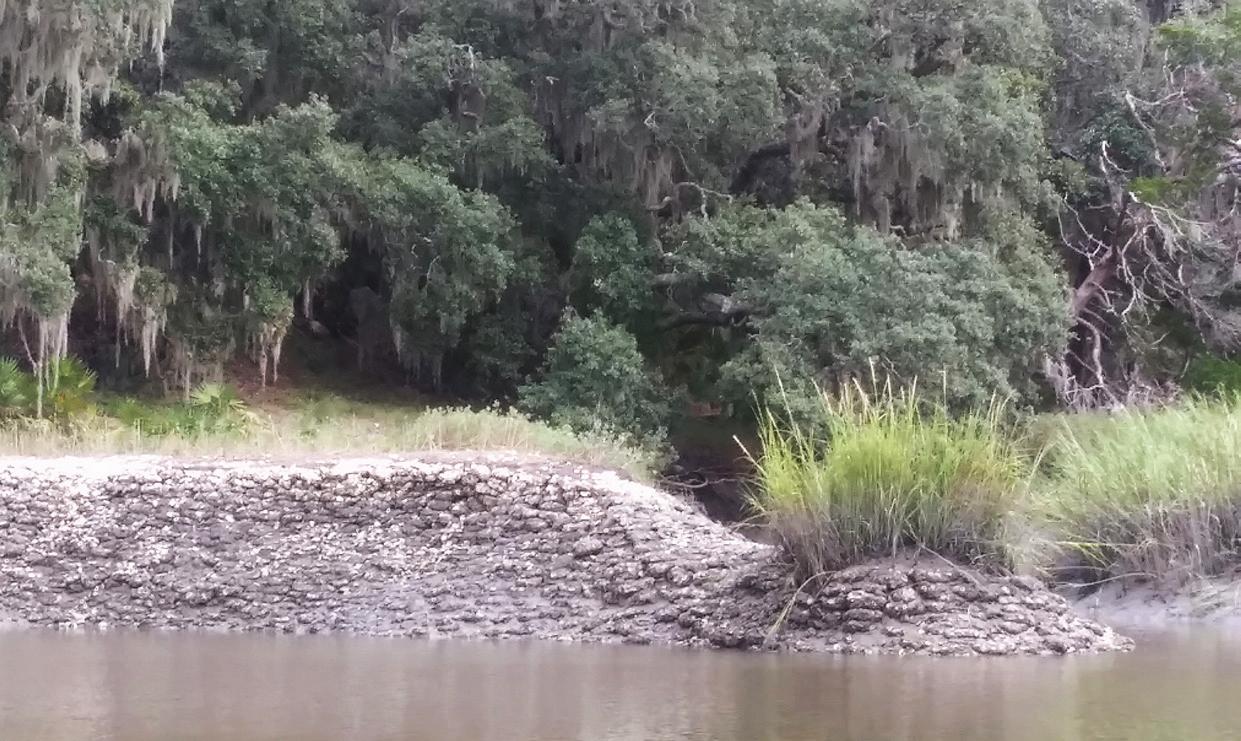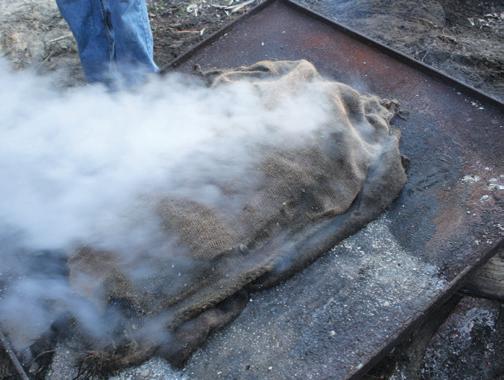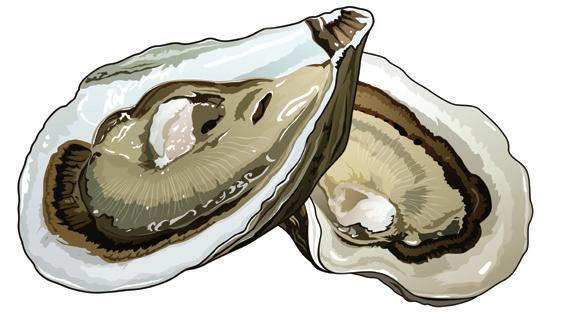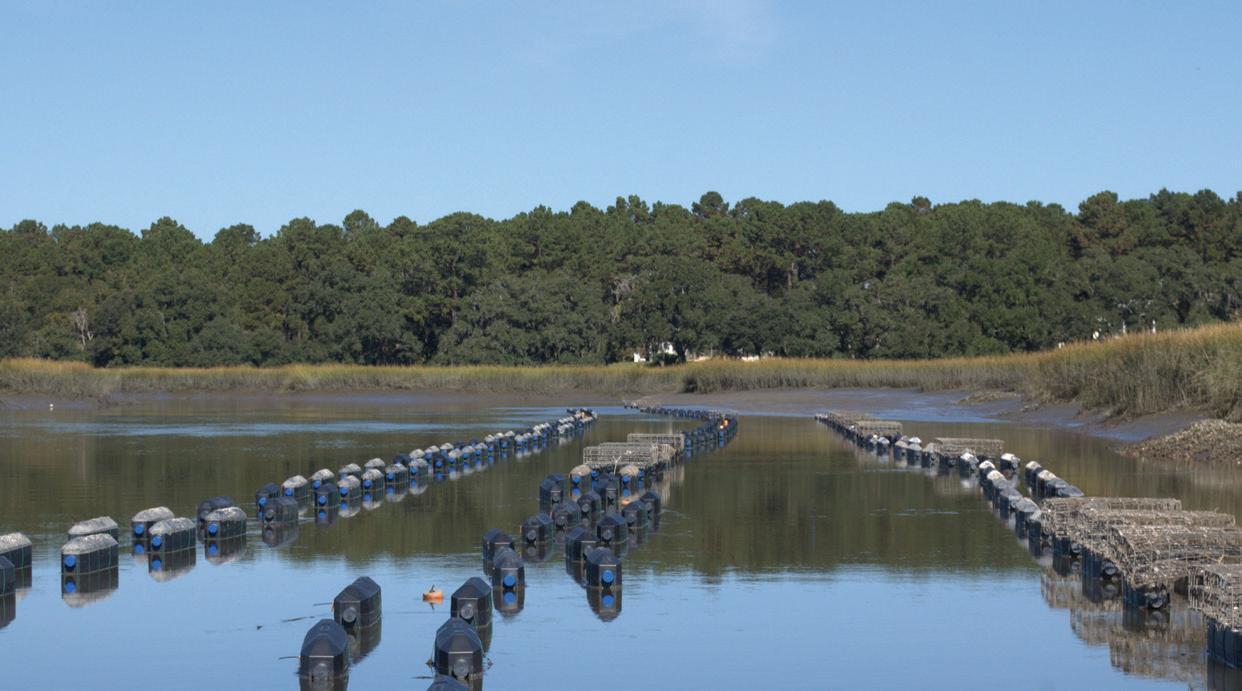
3 minute read
Editor's Note
The Oyster Issue
A perfect oyster ready to eat! This is one of Frank Roberts' "Single Lady" oysters with a clean crisp flavor. It was delicious! Photo by Amy Thurman
Advertisement
It’s that time of year again. Hunters are heading into the woods in search of whitetails, you have to check the Dogs’ schedule before planning anything that doesn't involve football on a Saturday, some of the best fishing of the year is going on now, and it isn’t unusual to have both sweatshirts and shorts in the same laundry cycle. Fall. When we make the transition from hosting lowcountry boils to hosting oyster roasts.
Oysters. They’re such a big part of our coastal culture – we could have doubled the number of pages in this issue and not run out of material. We have an article on how the oyster mariculture industry has changed in recent years (page 17). Did you know you can safely eat oysters year round now?
We have an article on living shorelines, a new method of restoring eroded banks and shorelines (page 12). And we’ve got thoughts on oyster roasts, new recipes, shell recycling locations, and more!
So let’s talk oysters.
I remember hearing about pearls in oysters when I was a kid and I think a number of cartoons touched on that, but I never hear anything about them anymore. So I went looking. Pearl oysters are mostly found in the Indian and Pacific Oceans, between Japan and Australia, which is why we don’t hear much about them around here, I suppose. The pearl is created when an irritant is introduced to the mantle, inside the oyster’s shell, and over time calcium carbonate builds up around the object. Any mollusk can produce a pearl, though typically only those produced in pearl oysters are pretty or valuable. At least, that’s what the articles I found suggested – if you find more information, by all means please share it with me!
Another thing we hear frequently is that oysters are an aphrodisiac. There’s that one guy at every oyster roast leering and cracking jokes about it! Well, turns out there’s a wee bit of truth to it. Oysters are high in zinc, which can have a positive impact on the libido. Some claim the textures of the oyster and the act of eating them have sensual elements, but I’ll leave that to you and oyster roast guy to explore on your own.
And still another thing that comes to mind when talk turns to oysters is the “months with an R” rule. Bad bacteria can grow in oysters when the water gets warm, which is typically May through August. That’s also when oysters spawn, which is hard work, and worn out oysters just aren’t as tasty. But a “new” species of oyster, triploids, has been introduced that are sterile and don’t spawn, so can be harvested year round, making oysters on the half shell possible in the summertime.
We’ve all heard debates about where the best oysters come from. Some swear by Apalachicola oysters, while those of us with discerning taste are certain that Georgia oysters are the best ever. The debates can become quite heated! It’s true that oysters from different locations have different flavors and some do taste better than others. But shocking as it may seem, there are those who don’t like oysters at all. Can you imagine?
I suspect that there’s more to it than simply not liking oysters. I mean really, how could you not? I suspect these folks fall into one of these categories: • Didn’t like the texture of raw oysters. To which I would tell you, try them roasted, fried, or in a pie. • Got a bad oyster and haven’t moved past it. To which I would tell you, if the bad oyster was roasted, eat a raw one, if the bad oyster was raw eat a roasted one. When you have another good oyster, memories of the bad one will fade. • Have never actually eaten oysters. To which I would tell you, shut up and try them in all their various delicious ways of eating them! Or don’t. The less you eat the more there is for me!
Hope y’all enjoy the issue and are making plans for the first oyster roasts of the season. Please send Southern Tides an invite! And remember to do your part for a healthy coast and recycle your oyster shells!
See you out there!
Amy Thurman Editor in Chief amy@southerntidesmagazine.com








